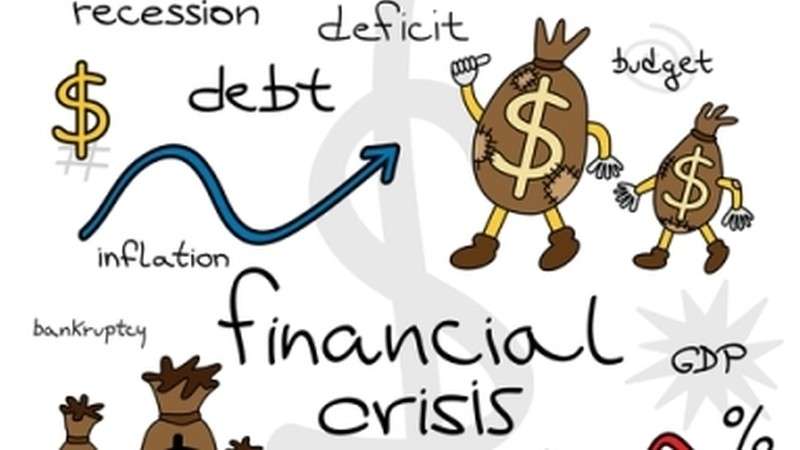Concept
Public debt is the total sum of money that the government of a country owes to lenders outside of itself, which includes, individuals, businesses, multinational corporations, foreign governments, and so on. Public debt is also known as government debt, sovereign debt, and national debt.
Public debt is the accumulation of annual budget deficit; it means the public debt is the result of, year-on-year, spending more than they take in via tax revenue.The government borrows money from individuals, businesses, and foreign governments to fill the gap between the government’s annual revenue and the government’s annual expenditure.
Objectives of public debt
The government borrows money for three reasons: (a) to meet the budget deficit, (b) to meet expenses of emergencies, and (c) to finance development activity
(a) Public Debt to Meet Budget Deficit:
It is not always proper to effect a change in the tax system whenever the public expenditure exceeds the public revenue. It is to be seen whether the transaction is casual or regular. If the budget deficit is casual, then it is proper to raise loans to meet the deficit. But if the deficit happens to be a regular feature every year, then the proper course for the State would be to raise further revenue by taxation or reduce its expenditure.
(b) Public Debt to Meet Emergencies like War:
In many countries, the existing public debt is, to a great extent, on account of war expenses. Especially after World War II, this type of public debt had considerably increased. A large portion of public debt in India has been incurred to defray the expenses of the last war.
(c) Public Debt for Development Purposes:
During British rule in India, public debt had to be raised to construct railways, irrigation projects, and other works. In the post-independence era, the government borrows from the public to meet the costs of development work under the Five Year Plans and other projects. As a result, the volume of public debt is increasing day by day.
Is public debt good or bad?
Public debt, if utilized properly, yields the highest return as it allows the government to build new roads and bridges, improve education and job training, and provide pensions. Moreover, the government borrows money from the public at a minimum rate of interest, and the public also readily lends money to the government at such a minimum rate of interest due to the absence of maturity risk, liquidity risk, and default risk. Public debt is a safe way for foreigners to invest in a country's growth by buying government bonds. Public debt is much safe than foreign direct investment.
If public debt is not utilized properly, it crumbles the country’s economy by trapping it into the never-ending cycles of a debt trap. Once the amount of debt servicing surpasses the actual debt amount, the country gets caught in the whirlpool of a debt trap. Improper debt servicing has ruined the economy of several countries of South America in the 1980s, known as the Debt crisis of the 1980s, and Asian countries in the late 1990s, also known as the Asian financial crisis of the late 1990s and the early 2000s.
Thus, if public debt is used properly by investing in productive sectors, physical and social overheads, then it yields the highest gains to the country. But if public debt is not utilized prudently, then it unnecessarily increases the burden to the country resulting in the default of the country.
How does public debt turn into a burden?
Public debt turns into a burden if debt servicing is not taken into consideration. A debt crisis is always attached to public debt. The debt crisis is a situation in which a government (nation, state/province, county, or city, etc.) loses the ability to pay back its governmental debt. When the expenditures of a government are more than its tax revenues for a prolonged period, the government may enter into a debt crisis.
Public debt turns into a burden in the long run or a prolonged period of time. As the country’s debt piles up, investors worry about their investment.Consequently, they demand higher interest rates, which exerts further pressure on the government. On the other hand, piling up public debt means that the government is pumping more money in the economy, which inevitably builds up inflationary pressures. Inflation erodes the real interest rate, which demotivates foreign investors to invest in government bonds; also, the government with huge public debt will certainly pay lower interest rates in the future. Thus, these negative economic circumstances devaluate domestic currency making the debt servicing costlier. Eventually, a country gets trapped in a prolonged debt crisis.
What are the causes of the debt crisis?
Some of the primary causes of the debt crisis are as follows:
1. Oil price shock
The fundamental cause of the debt crisis in the 1970s and the 1980s was the increase in oil prices by the Organization of Petroleum Exporting countries (OPEC). The cartel in the oil supply was the principal reason for the rise in oil prices. The rise in oil prices unnaturally increased the import bill of developing and least developed countries. The current account deficit of developed and least developed countries increased unnaturally. Thus, the developed and least developed countries failed to pay their debt off.
2. Bad macro-economic management
The major problem with LDCs is bad macroeconomic management. Most of the least developed countries have a deficit budget. The majority portion of their tax revenue is consumed up in recurrent expenditure. Moreover, most of the least developed countries have recurrent expenditure in excess of tax revenue. Once the tax revenue falls short of recurrent expenditure, a country is forced to use internal and external borrowing to fulfill the regular needs. As per the principle, a country shall use tax revenue to fulfill its recurrent needs and borrowings to fulfill its capital expenditure.
3. Rising interest rate
The increase in the interest rate also adds to the debt crisis. The rising interest rate increases the costs of servicing the past debts and of new debts of LDCs. Moreover, the situation further worsens with a decreasing GDP growth rate. If the GDP growth rate is less than the interest on the debt, then a country gets trapped in a debt crisis. The increased interest rate puts further pressure on debt servicing as the amount of debt servicing is tied to the interest rate. Suppose a country has a debt of $100 million. Previously the interest rate was 2 percent per annum and is increased to 3 percent per annum, then the interest amount will increase from $2 million to $3 million. A rise in a million-dollar interest is a huge increase for impoverished LDCs.
4. Fluctuating exchange rate
The fluctuating exchange rate also creates a problem for LDCs. The amount of debt servicing must be paid in dollar terms. The appreciation of the dollar in comparison to the domestic currency increases the amount of debt servicing. In our previous example, a country has a debt of $100 million, and the interest rate is unchanged at 2 percent per annum. However, the domestic currency devalued in dollar terms. Suppose at the time of acceptance of the debt exchange rate was 1 USD = Rs. 108, and during the time of payment of debt interest it is 1 USD = Rs. 125. Then, a country must pay Rs. 34 million [(125-108)*2 million] more due to currency devaluation.
5. Trade policies
The trade policies of both LDCs and developed countries also led to the growth of the external growth of LDCs. The developed countries are industrialized and are the major exporting countries in the world. The World Trade Organization (WTO) has also benefited the advanced economies in comparison to LDCs. With the introduction of WTO, the LDCs nearly turned into a dumping site. The increasing trade deficit in the LDCs is compelling them to borrow external debts. With the rise in the trade deficit, LDCs' tax collection is consumed up in the purchase of goods and services from abroad.
The fundamental cause of the debt crisis in the 1970s and the 1980s was the increase in oil prices by the Organization of Petroleum Exporting countries (OPEC). The cartel in the oil supply was the principal reason for the rise in oil prices. The rise in oil prices unnaturally increased the import bill of developing and least developed countries. The current account deficit of developed and least developed countries increased unnaturally. Thus, the developed and least developed countries failed to pay their debt off.
2. Bad macro-economic management
The major problem with LDCs is bad macroeconomic management. Most of the least developed countries have a deficit budget. The majority portion of their tax revenue is consumed up in recurrent expenditure. Moreover, most of the least developed countries have recurrent expenditure in excess of tax revenue. Once the tax revenue falls short of recurrent expenditure, a country is forced to use internal and external borrowing to fulfill the regular needs. As per the principle, a country shall use tax revenue to fulfill its recurrent needs and borrowings to fulfill its capital expenditure.
3. Rising interest rate
The increase in the interest rate also adds to the debt crisis. The rising interest rate increases the costs of servicing the past debts and of new debts of LDCs. Moreover, the situation further worsens with a decreasing GDP growth rate. If the GDP growth rate is less than the interest on the debt, then a country gets trapped in a debt crisis. The increased interest rate puts further pressure on debt servicing as the amount of debt servicing is tied to the interest rate. Suppose a country has a debt of $100 million. Previously the interest rate was 2 percent per annum and is increased to 3 percent per annum, then the interest amount will increase from $2 million to $3 million. A rise in a million-dollar interest is a huge increase for impoverished LDCs.
4. Fluctuating exchange rate
The fluctuating exchange rate also creates a problem for LDCs. The amount of debt servicing must be paid in dollar terms. The appreciation of the dollar in comparison to the domestic currency increases the amount of debt servicing. In our previous example, a country has a debt of $100 million, and the interest rate is unchanged at 2 percent per annum. However, the domestic currency devalued in dollar terms. Suppose at the time of acceptance of the debt exchange rate was 1 USD = Rs. 108, and during the time of payment of debt interest it is 1 USD = Rs. 125. Then, a country must pay Rs. 34 million [(125-108)*2 million] more due to currency devaluation.
5. Trade policies
The trade policies of both LDCs and developed countries also led to the growth of the external growth of LDCs. The developed countries are industrialized and are the major exporting countries in the world. The World Trade Organization (WTO) has also benefited the advanced economies in comparison to LDCs. With the introduction of WTO, the LDCs nearly turned into a dumping site. The increasing trade deficit in the LDCs is compelling them to borrow external debts. With the rise in the trade deficit, LDCs' tax collection is consumed up in the purchase of goods and services from abroad.
[1] Amaded, K. (2019, February 13). Public Debt With Its Pros and Cons. Retrieved from https://www.thebalance.com/what-is-the-public-debt-3306294
[2]Extracted from Economicsdiscussion.net article shared by Suman, Sanket
[3] Capital mainly owned by the state and used to produce goods and services that are not sold for money. Examples of social capital are roads, schools, hospitals, public parks, and libraries.



Post a Comment